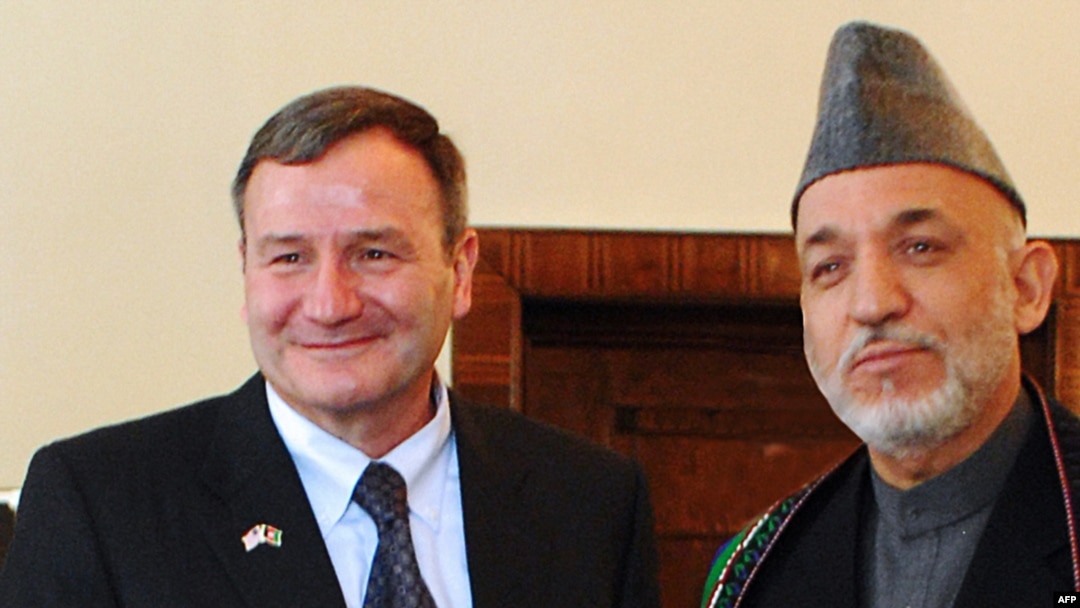KABUL -- A NATO-led air raid may have killed eight civilians in Afghanistan, the alliance has said, in the latest incident of noncombatant casualties that have stoked anger in the country.
Separately, the U.S. military said an initial investigation showed that between 20 to 30 civilians were possibly killed in its air strike early this month in western Farah Province, where the Afghan government says the deaths numbered 140.
NATO said it sent warplanes on May 19 to Nawa in southern Helmand Province after insurgents attacked an alliance patrol.
"Tragically, it is believed that eight civilians were killed as a result of the air strike," it said in a statement, adding NATO was investigating the incident jointly with Afghan authorities.
It did not say wether there were any casualties among the troops or the attackers apart from the civilian ones.
The casualties have been a major source of friction between President Hamid Karzai, who is seeking reelection in August, and his Western backers.
More than seven years after U.S.-led forces ousted the Taliban, the growing number of civilian casualties have undermined support for foreign troops trying to stabilize Afghanistan, even as the insurgency gains strength.
Single Deadliest Incident
The Afghan government's toll of 140 civilian deaths in Farah makes it the single deadliest incident from an air strike since the campaign against the Taliban began in late 2001.
The U.S. military on May 20 said a preliminary investigation into the bombings in Farah showed far fewer civilians were killed.
"A review of the physical evidence is inconclusive in determining the exact number of civilian and insurgent casualties," it said in a statement.
"In all, the investigation team estimates that 60-65 Taliban extremists were killed in these engagements, while at least 20-30 civilians may have been killed during the fighting," it said, adding investigators were still trying to confirm the death toll.
Karzai, along with the new U.S. ambassador to Afghanistan, met grieving survivors of the air strikes in Farah on May 19 and again called for an end to aerial attacks.
The air strikes were called in after U.S. Marines and Afghan security forces became involved in a fierce battle with Taliban militants, but hit houses that the government says were filled with cowering women and children.
A copy of the government's list of the names, ages, and father's names of each of the 140 dead showed that 93 of those killed were children, 25 were adult women, and only 22 were adult males.
Ill-equipped and outnumbered, the Taliban have launched guerrilla attacks against around 70,000 foreign troops. Given the terrain and size of Afghanistan, the foreign troops mostly rely on air power while hunting the militants.
U.S. commanders have rushed thousands of reinforcements to Afghanistan in what Washington considers a make-or-break year for a war it now views as its main security priority.
Separately, the U.S. military said an initial investigation showed that between 20 to 30 civilians were possibly killed in its air strike early this month in western Farah Province, where the Afghan government says the deaths numbered 140.
NATO said it sent warplanes on May 19 to Nawa in southern Helmand Province after insurgents attacked an alliance patrol.
"Tragically, it is believed that eight civilians were killed as a result of the air strike," it said in a statement, adding NATO was investigating the incident jointly with Afghan authorities.
It did not say wether there were any casualties among the troops or the attackers apart from the civilian ones.
The casualties have been a major source of friction between President Hamid Karzai, who is seeking reelection in August, and his Western backers.
More than seven years after U.S.-led forces ousted the Taliban, the growing number of civilian casualties have undermined support for foreign troops trying to stabilize Afghanistan, even as the insurgency gains strength.
Single Deadliest Incident
The Afghan government's toll of 140 civilian deaths in Farah makes it the single deadliest incident from an air strike since the campaign against the Taliban began in late 2001.
The U.S. military on May 20 said a preliminary investigation into the bombings in Farah showed far fewer civilians were killed.
"A review of the physical evidence is inconclusive in determining the exact number of civilian and insurgent casualties," it said in a statement.
"In all, the investigation team estimates that 60-65 Taliban extremists were killed in these engagements, while at least 20-30 civilians may have been killed during the fighting," it said, adding investigators were still trying to confirm the death toll.
Karzai, along with the new U.S. ambassador to Afghanistan, met grieving survivors of the air strikes in Farah on May 19 and again called for an end to aerial attacks.
The air strikes were called in after U.S. Marines and Afghan security forces became involved in a fierce battle with Taliban militants, but hit houses that the government says were filled with cowering women and children.
A copy of the government's list of the names, ages, and father's names of each of the 140 dead showed that 93 of those killed were children, 25 were adult women, and only 22 were adult males.
Ill-equipped and outnumbered, the Taliban have launched guerrilla attacks against around 70,000 foreign troops. Given the terrain and size of Afghanistan, the foreign troops mostly rely on air power while hunting the militants.
U.S. commanders have rushed thousands of reinforcements to Afghanistan in what Washington considers a make-or-break year for a war it now views as its main security priority.


